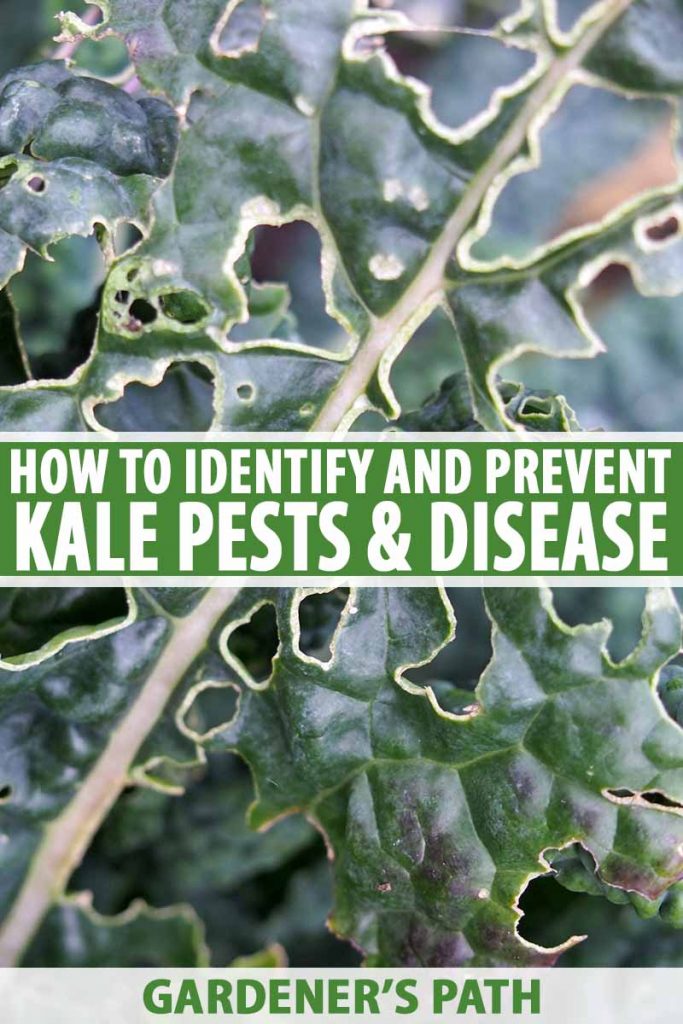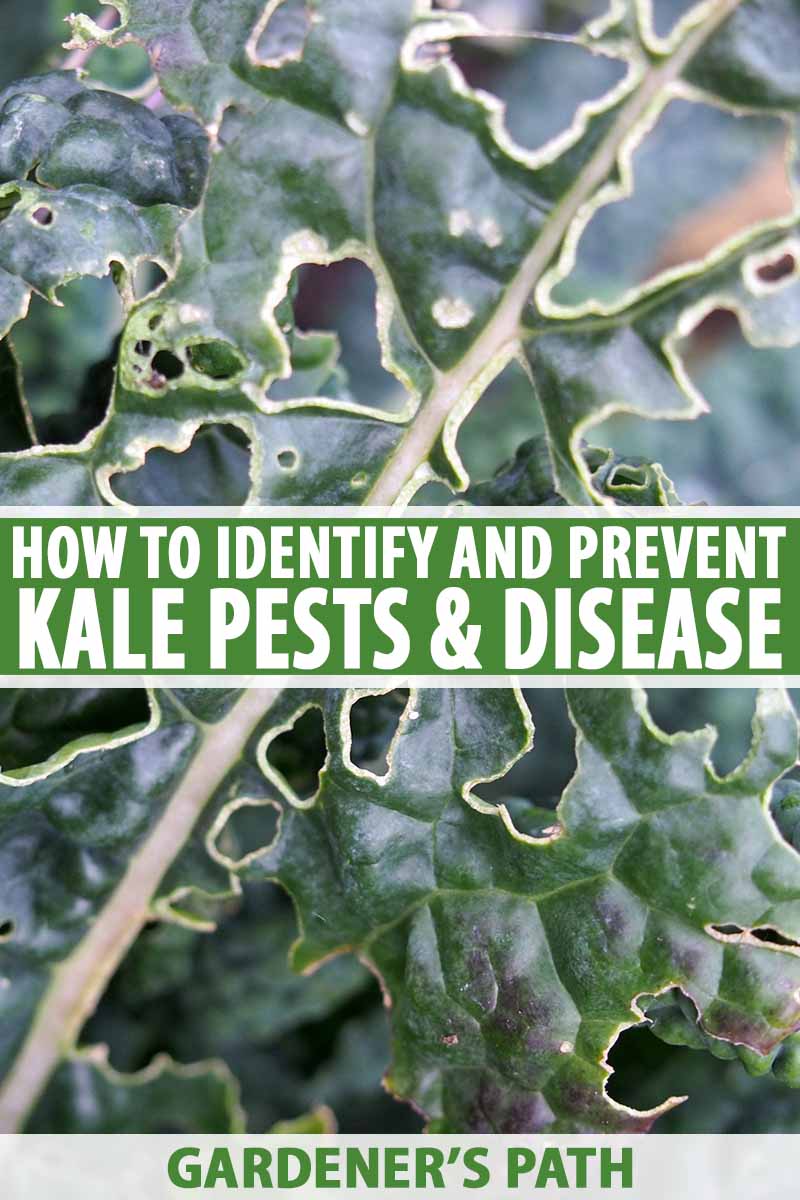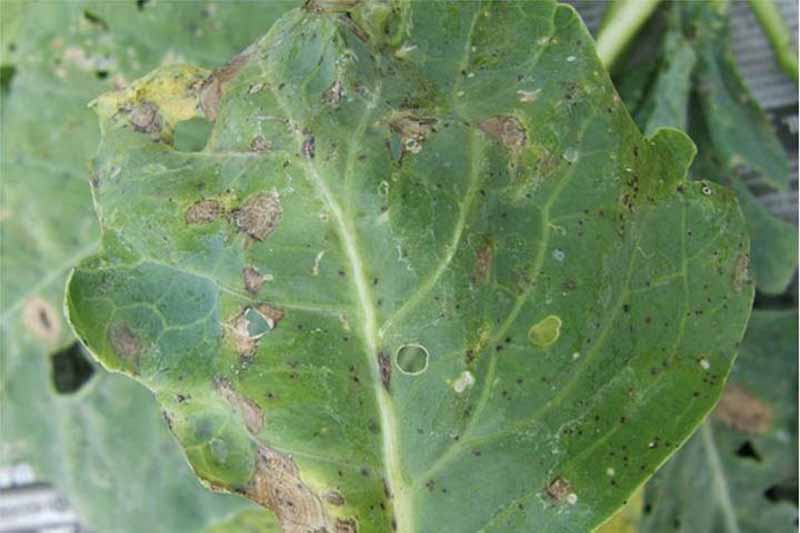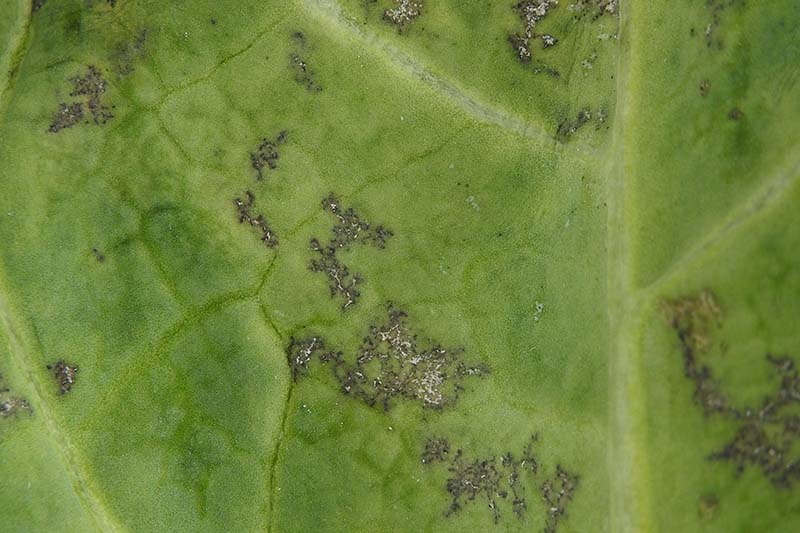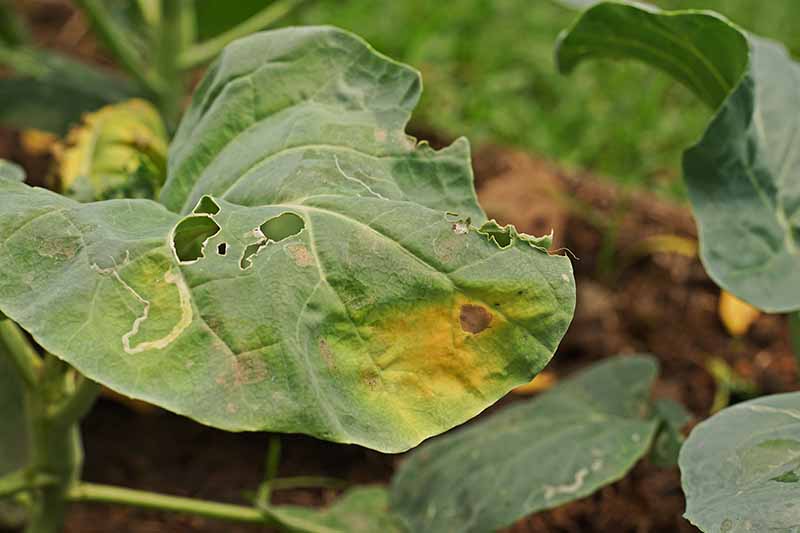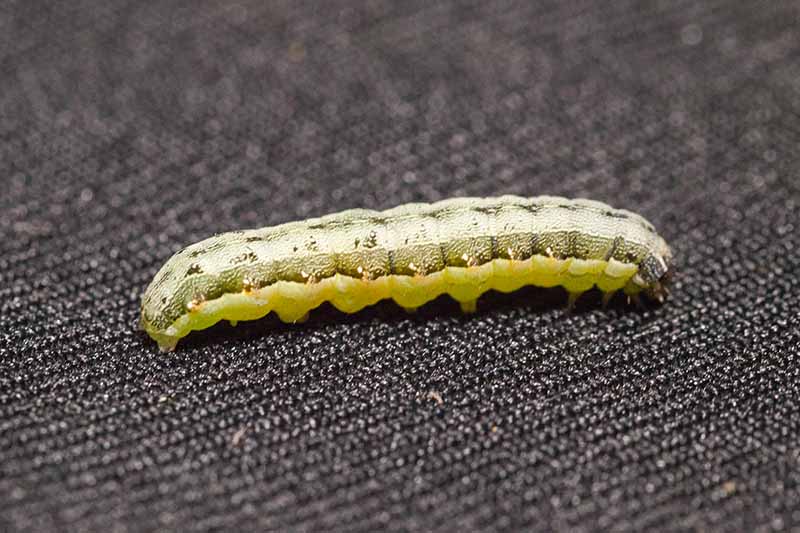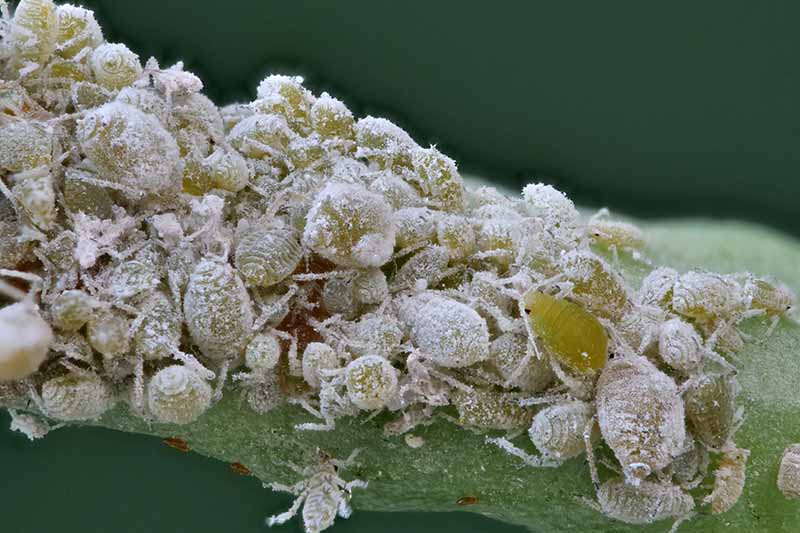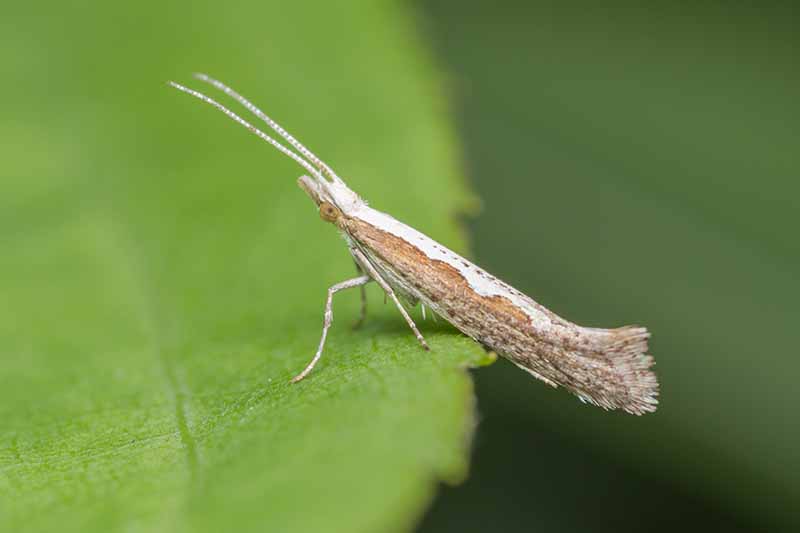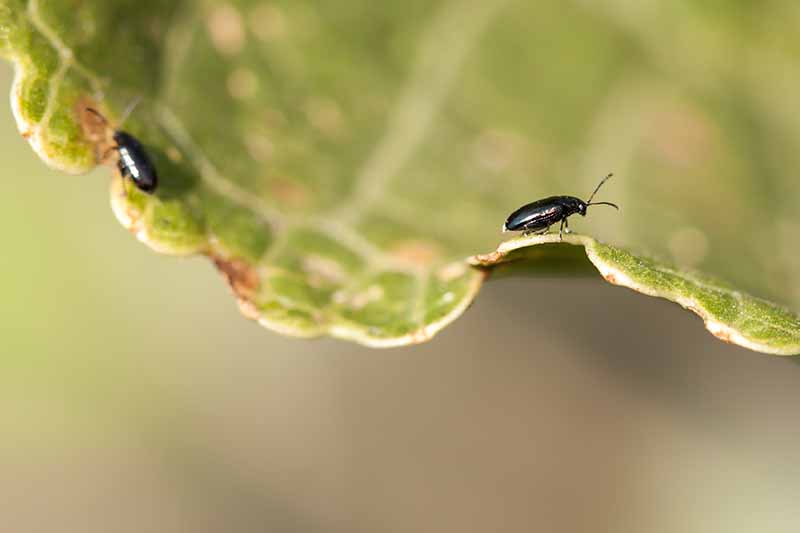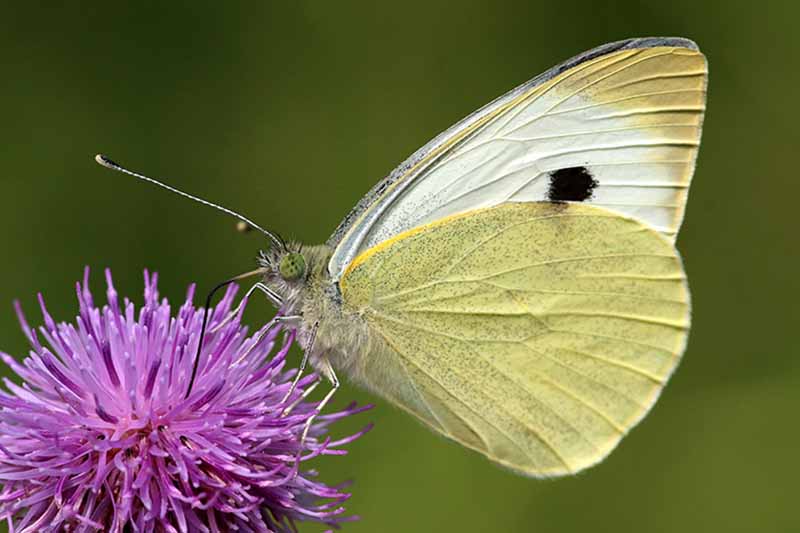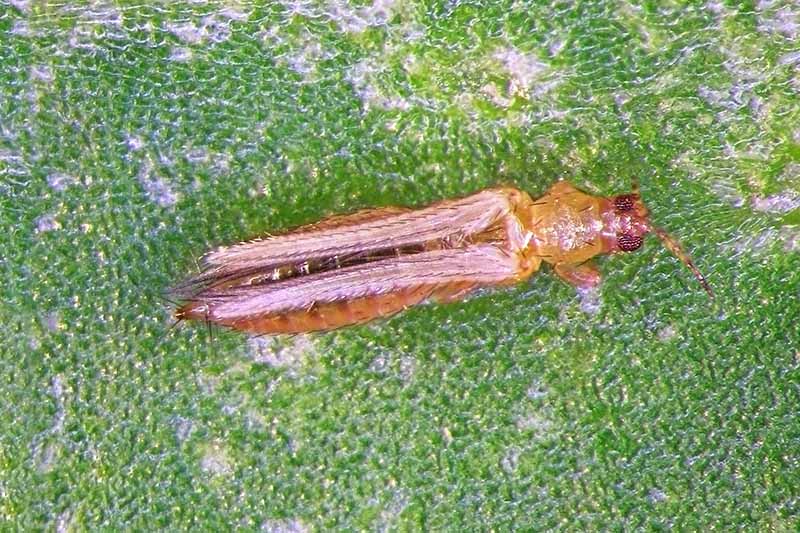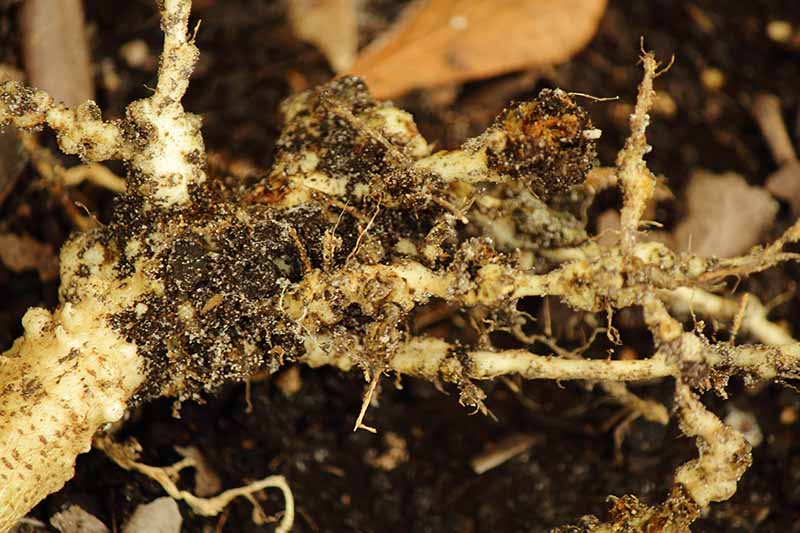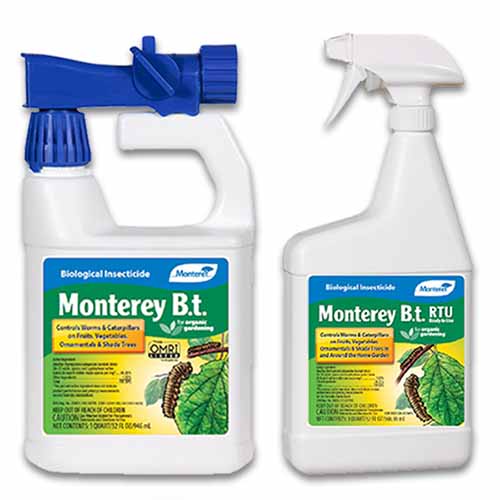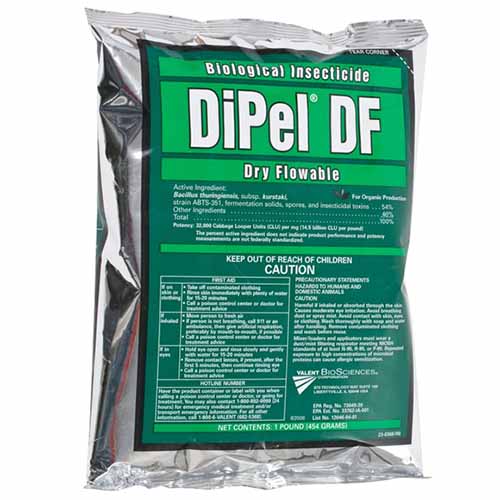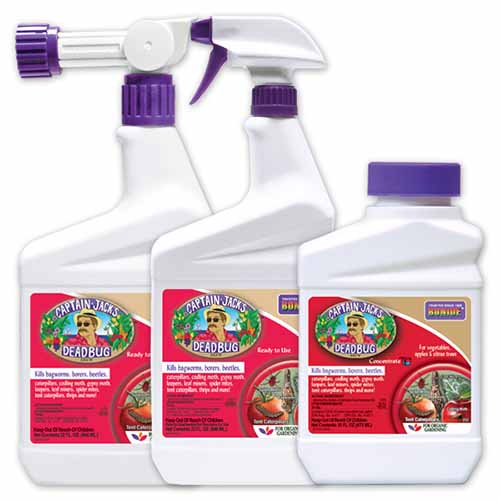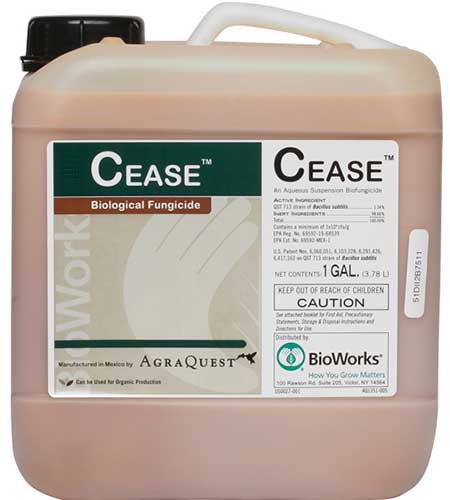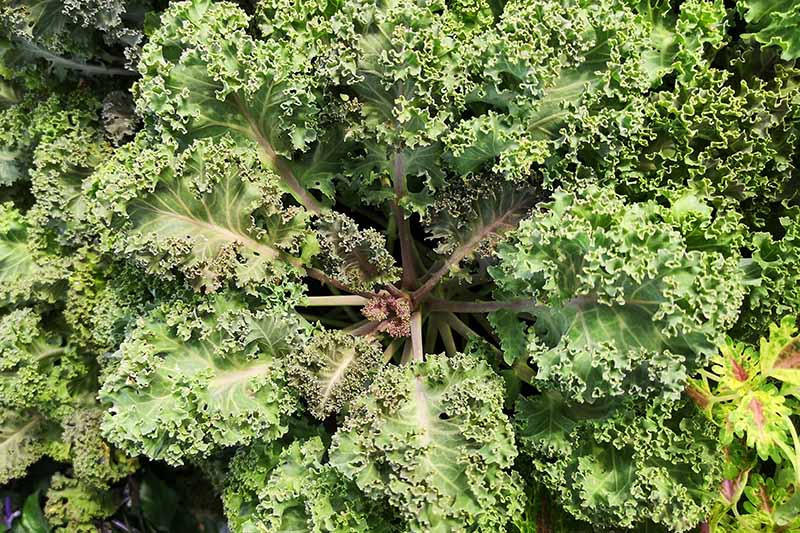We link to vendors to help you find relevant products. If you buy from one of our links, we may earn a commission. Diseases include several serious bacterial leaf pathogens, along with a number of fungi that can infect the plants. Many types of insects can afflict kale, ranging from cabbage butterflies to thrips and flea beetles.
You can help protect your plants by using floating row covers. These covers prevent splashing water – that may contain pathogens – from touching the foliage, and can prevent insects from laying their eggs on crops. Using heat-treated seed can also protect against certain bacterial pathogens and several diseases. If you cannot buy these types of seeds, you can always treat them yourself (more on this later). With a bit of diligent care, you can protect your plants from these menaces and have a healthy crop of delectable kale.
Pathogens
A variety of pathogens can assault kale, including a number of fungal diseases, those caused by water molds, a nasty nematode, and three truly frightening types of bacteria.
Fungal diseases
Although rare, most of the fungi that infect kale can be devastating pathogens.
Alternaria leaf spot (Alternaria brassicae, A. brassicicola)
A condition commonly known as “black spot,” these fungi cause small dark spots to form on the leaves. The lesions may look like a target with concentric rings. This disease is likely to be a problem in warm, moist weather. Control options range from cultural ones, such as using disease-free seeds that have been heated with 122°F water for 15 minutes, to keeping good airflow between plants, eliminating cruciferous weeds, and rotating crops. Also, try and keep your kale leaves dry to prevent these fungi from gaining a foothold. If you do irrigate, do so in the morning and keep the spray at the base of plants, off the leaves. You can also spray with biofungicides such as Bacillus amyloliquefaciens (Double Nickle) or B. subtilis (CEASE). Liquid copper is another option.
Anthracnose (Colletotrichum higginsianum)
This fungus causes dry, circular lesions on the leaves of your kale plants, and can also predispose them to bacterial soft rot. Sources of infection include infected seeds, some types of weeds, and fallen leaves. Fortunately, this fungal disease is most likely to occur during moist warm weather – not typical weather for growing kale. Fungicides can be used to control this infection.
Damping Off (Rhizoctonia solani, Pythium spp.)
Damping off is responsible for the devastation you feel when your seeds fail to grow – or even worse – your seedlings collapse and die en masse. However, there are steps you can take to prevent your seedlings from suffering this fate. Read more about the signs and symptoms of damping off and tips for prevention.
Water Mold Diseases
Although water molds are no longer considered to be fungi, they look similar and can cause devastating diseases on many plants.
Downy Mildew (Peronospora parasitica)
Downy mildew was considered a fungus for several centuries, and it does in fact resemble one, but additional research has led to its reclassification as a water mold or oomycete, something more akin to algae. As the name suggests, downy mildew causes problems under moist conditions, such as heavy dew, fog, drizzling rain, and high humidity. You can tell if your crop is infected because there will be fluffy gray patches on the bottoms of the leaves. The upper surfaces will exhibit yellow patches that will turn light brown. Prevention is the best way to manage this disease. Rotate your crops with plants that are not crucifers. Purge all of the crop debris after you have harvested. You may need to resort to fungicides if the disease is severe.
Bacterial Diseases
These are the most common bacterial diseases that you could find on your kale plants.
Bacterial Leaf Spot (Pseudomonas syringae pv. maculicola; Xanthomonas campestris pv. amoracia)
The serious diseases caused by these two pathogens can be spread by splashing rain or irrigation water on the leaves. Floating row covers are one way to prevent this.
Symptoms include yellowing of the leaves, and in severe cases, the leaves may die. Prevention is the best way to control this disease, see our full guide to bacterial leaf spot on kale.
Black Rot (Xanthomonas campestris pv. campestris)
Black rot gets its name because infected leaves will turn black and die in the final stages of the disease, leaving the whole plant rotten. Classic symptoms earlier in the infection process include V-shaped lesions along the margins of the leaves. This bacterial pathogen usually spreads via infected seeds that are inadvertently harvested and sold. Many seed companies test for black rot, given its severity. As with bacterial leaf spot, prevention is the best way to save your crop from this lethal disease. Get detailed information on preventing and controlling black rot here.
Insect Pests
Unfortunately, a large number of insects like to feed on kale and other cole crops. But fortunately, treatments are available for most of these pests.
Beet armyworm (Spodoptera exigua)
You’ll likely discover that you are fighting this caterpillar when you notice leaves that are skeletonized – the result of heavy feeding by the larvae. The holes can be circular or irregularly shaped.
The caterpillars are pale green to yellow when they are young, and the older ones are darker green. They have a characteristic dark and light line along the sides of their bodies and yellow or pink undersides. The chemicals available to control the beet armyworm are not usually very effective, but Bt (Bacillus thuringiensis) is an effective option for beet armyworm control. Read more about controlling beet armyworms here.
Cabbage Aphid (Brevicoryne brassicaea)
Cabbage aphids can be devastating to kale and other crops. You can recognize them by their white, waxy coating.
If there are only a few of them, you can prune the infested leaves. However, large populations can stunt the growth of the plant or even kill it. You can try spraying with neem oil, canola oil, or use insecticidal soaps to knock down an infestation.
Cabbage Looper (Trichoplusia ni)
Cabbage looper caterpillars are recognizable by the way they move. They draw their back legs toward their front legs, forming an almost circular loop before extending themselves again.
The cabbage looper caterpillars are between 1.5 and 2 inches long and chew large, odd-shaped holes in the foliage. Natural enemies – including ladybugs, pirate bugs, spiders, and wasps – will feast on the eggs and larvae and usually keep these pests under control. However, if you need to, you can control these caterpillars with Bt or pyrethrins. Learn more about controlling cabbage looper infestations here.
Diamondback Moth (Plutella xylostella)
The larvae of these moths are distinctive because they are tapered at both ends. They have V-shaped prolegs on their rear end.
You’ll usually find young larvae between the lower and upper leaf surfaces. They create small holes on the bottom of the leaves and will be visible coming through the top. Beneficial insects will help control these larvae. In fact, the egg parasite Trichogramma pretiosum will keep them under control in California. The larvae mature in about two weeks and spin a cocoon-like gauze on the stems or leaves in order to pupate. You can control these pests with Bt or Entrust. One advantage of using Bt is that it will not affect the beneficial insects.
Flea Beetles (Phytlotreta spp.)
If your kale leaves have a number of really tiny holes in them, it is likely that they are infested with flea beetles. These shiny black beetles jump when disturbed.
Older plants can tolerate an infestation, but young plants are more susceptible to damage. If you know that flea beetles are likely to be a problem in your area, you can set up floating row covers to keep them off your crops. Another option is to use trap plants of some other type of crucifer, such as radish. You can also mulch the soil to help keep them from coming out of the ground in the spring. Sprays of neem oil or applications of diatomaceous earth are effective organic options to control these beetles.
Large Cabbage White (Pieres rapae) and Cross-Striped Cabbageworm (Evergestis rimosalis)
While the butterflies are pretty, the green, hairy caterpillars can quickly cause extensive damage to your plants. One of the telltale signs of these caterpillars is that they move very slowly, leaving large, ragged holes in the leaves.
If you expect an infestation because you have had problems in the past, you can set up floating row covers before the butterflies start flying around to lay their eggs. If you do end up with these caterpillars, you can hand pick them off your crops and destroy them. If you detect them early, you can use Bt. Later in the season, you can control them with pyrethrin or spinosad, although these organic compounds will also harm beneficial insects.
Thrips (Frankliniella occidentalis; Thrips tabaci)
Not only do thrips cause damage, but these insects can also spread viruses!
They are difficult to detect, since they are so small, only about 1.5 millimeters in length. The adults are light brown to pale yellow, and the nymphs are lighter in color. However, their damage is anything but small! Damaged leaves may be distorted and can appear silver in color. You can deter these pests by using reflective mulch early in the season. Avoid planting next to crops that tend to attract large populations. These include cereals, garlic, or onions. If the population in your vegetable patch gets too large to manage and crop damage is significant, you can control them with neem oil or insecticidal soaps. Find more information on controlling thrip infestations here.
Nematodes
Nematodes are particularly destructive, since they lurk in the soil, and it takes a while to notice their damage.
Root-Knot Nematode (Meloidogyne spp.)
One of the first signs that your kale plants might be infested with these roundworms is when they wilt in the afternoon sun. Your plants may also be stunted and grow irregularly. Dig up a plant and take a look – the roots will have characteristic galls.
Unfortunately, kale is sensitive to all the species in this large genus. On the bright side, these nematodes are most active in the summer when kale is rarely grown. Nematodes are more likely to be a problem in sandy, well-drained soils. You can prevent a nematode infestation by rotating your land with a grass crop for at least two years. You should avoid broadleaf crops, since many of them are hosts for these pests. Learn how to control root-knot nematodes in our guide.
Where to Buy
For your convenience, several of the recommended products described above for controlling common pests on kale are available from our trusted affiliate, Arbico Organics.
Btk (Bacillus thuringiensis)
You can obtain several different formulations of Btk to kill caterpillars.
Monterey Bt Liquid Btk will not harm birds or beneficial insects. You have options of spray-on Monterey Bt liquid or liquid concentrates both available from Arbico Organics. If you need a large volume, you can buy bags of DiPel® dry flowable version instead.
DiPel® dry flowable insecticide DiPel® is sold in 1 lb or 5 lb bags, and is also available from Arbico Organics.
Spinosad
Spinosad is another option to control caterpillars.
BONIDE® Captain Jack’s Deadbug Brew™ Spinosad is available from Arbico Organics in spray bottles of various sizes.
Biofungicides
Biofungicides available include Bacillus amyloliquefaciens (Double Nickle) or B. subtilis (CEASE).
CEASE Biological Fungicide CEASE Biological Fungicide, available at Arbico Organics, is a broad-spectrum fungicide that can be used throughout the growing season as a preventative measure. Liquid copper is also available from Arbico Organics, as is neem oil.
You Can Protect Your Kale Plants
Knowledge is power, and knowing what types of pests and pathogens commonly attack kale can help you to protect against them with an integrated pest management strategy.
For example, knowing that kale plants usually contract severe bacterial diseases from infected seed empowers you to buy heat-treated seeds, or treat them yourself.
And now that you are aware that your garden is prone to particular types of insect infestations (like flea beetles), you can put down floating row covers before the insects spread. It’s all about knowing what to look out for, hoping for the best, and planning for the worst! If your plants become infected despite your best efforts, knowing what symptoms to look for will guide you in your treatment decisions. Our hope is that this guide will help you to enjoy your harvest instead of having to share it with renegade organisms. Have you done battle with pests or diseases on your kale plants? If so, share your experience in the comments. And read on for more information on growing kale:
How to Naturally Kill Insects on Kale: The Best Organic Solutions 13 of the Best Kale Varieties for the Home Garden How to Harvest and Store Kale Seeds What Causes Yellowing and Thinning of Kale Leaves?
© Ask the Experts, LLC. ALL RIGHTS RESERVED. See our TOS for more details. Photos courtesy Margaret McGrath (Cornell University) and Wikimedia Commons. Uncredited photos: Shutterstock. Additional writing and editing by Clare Groom and Allison Sidhu.
